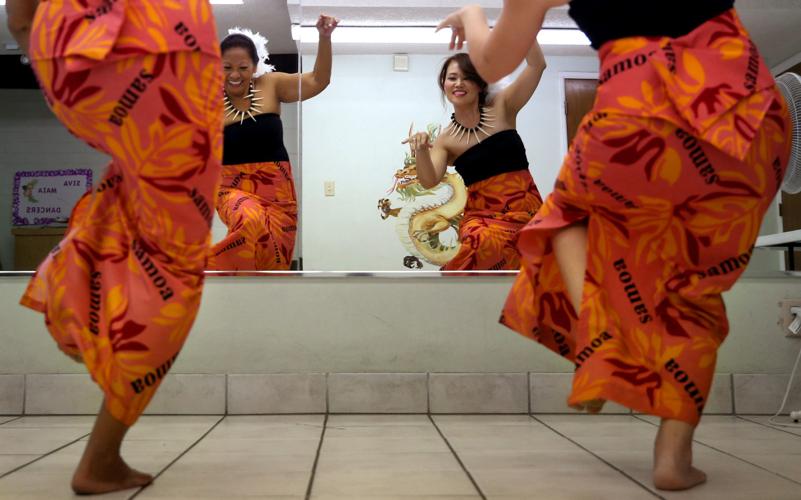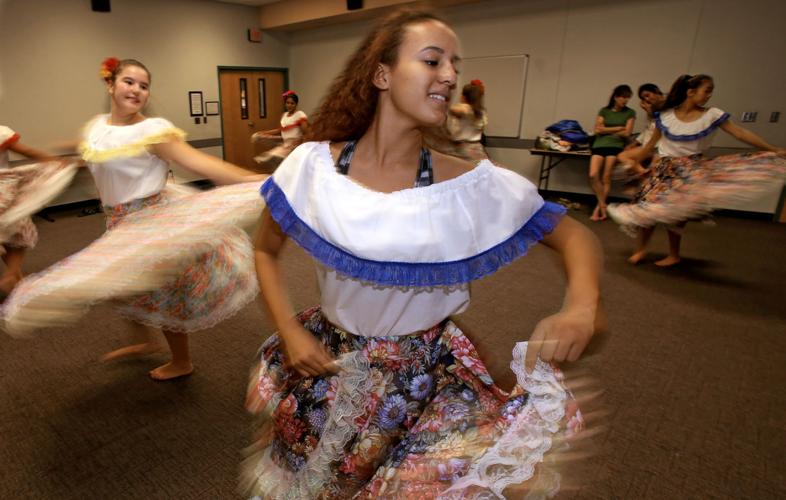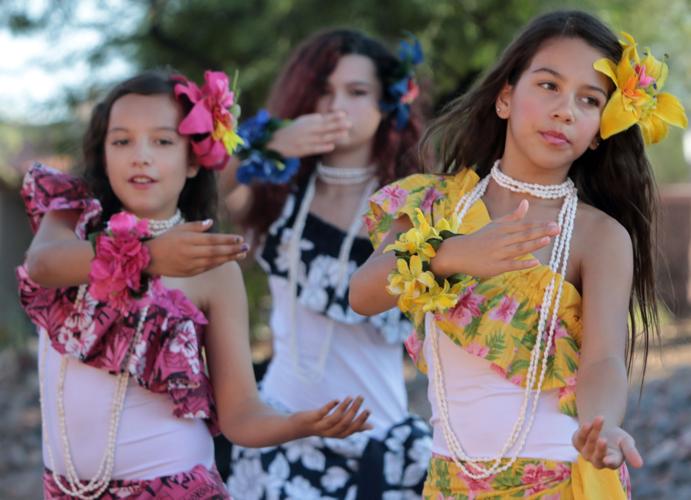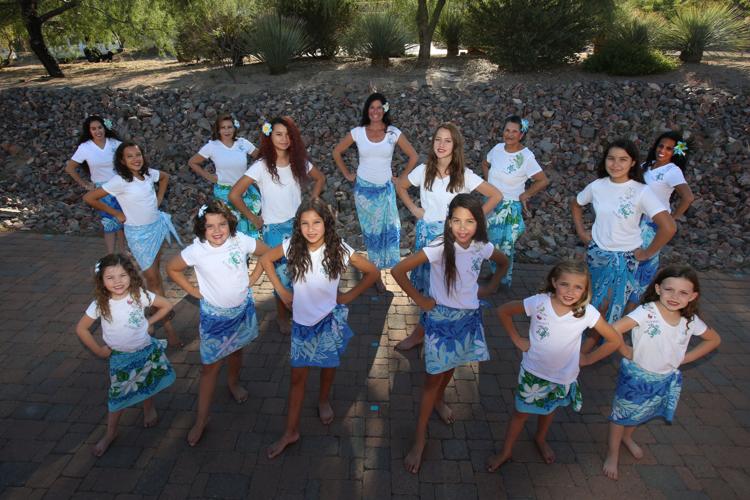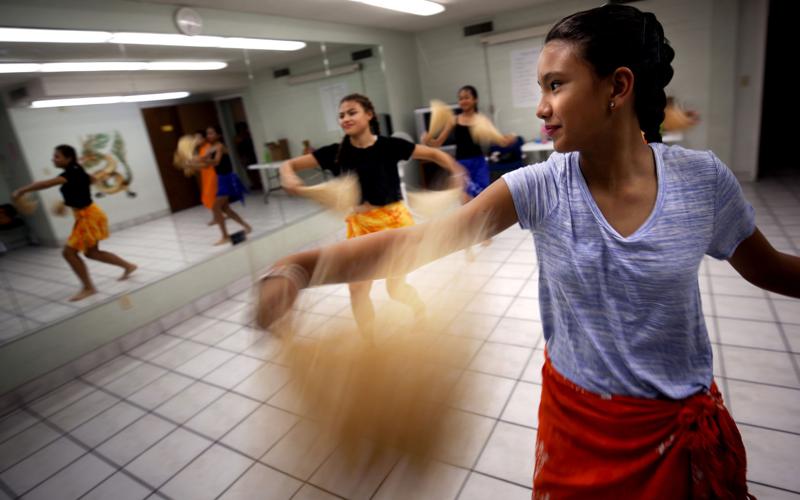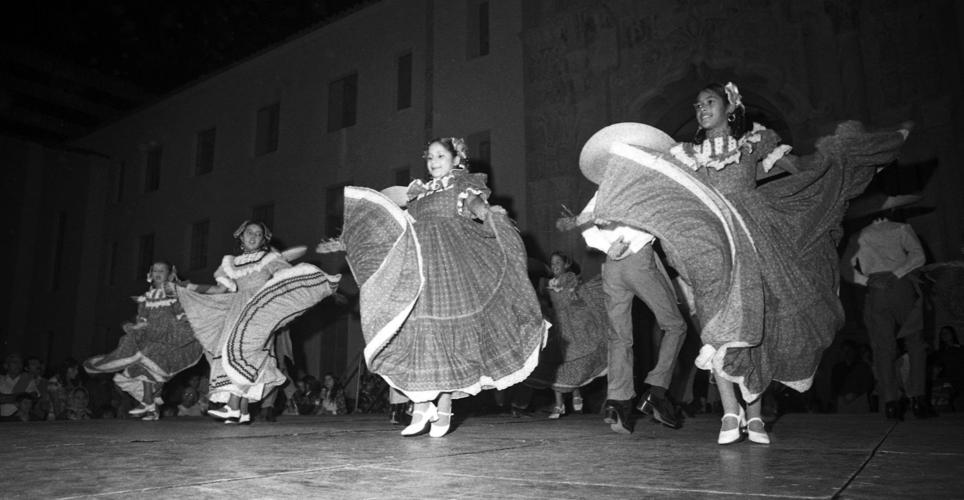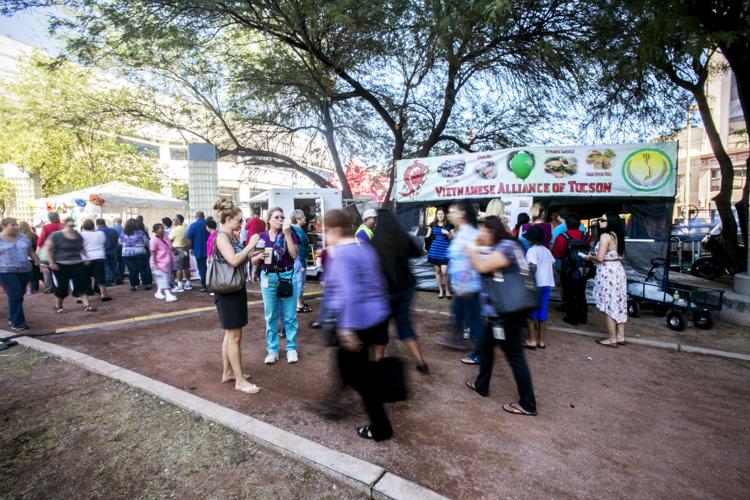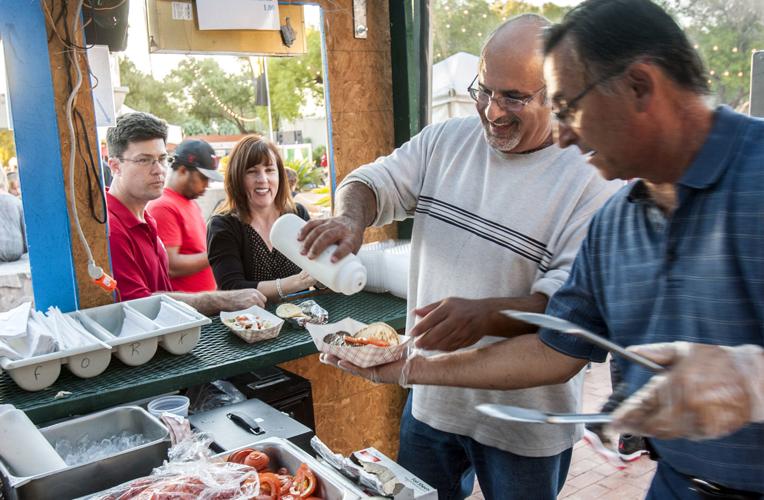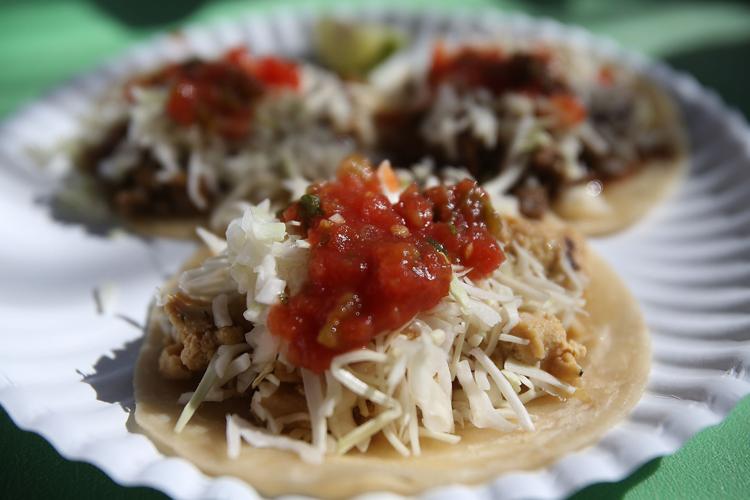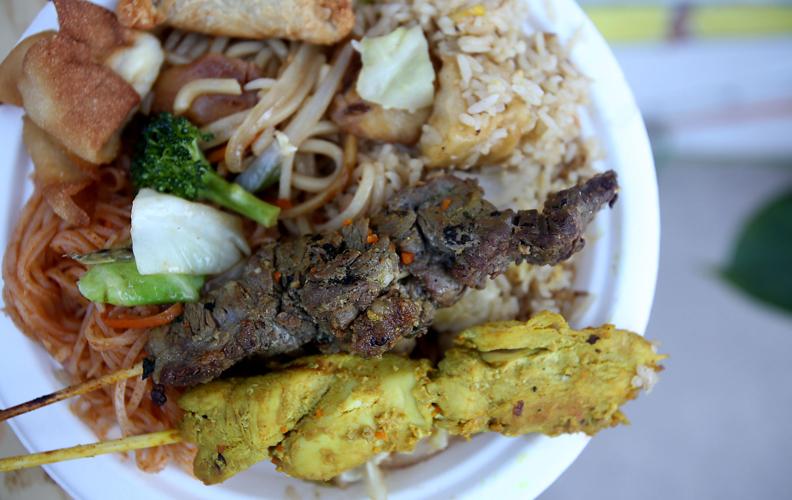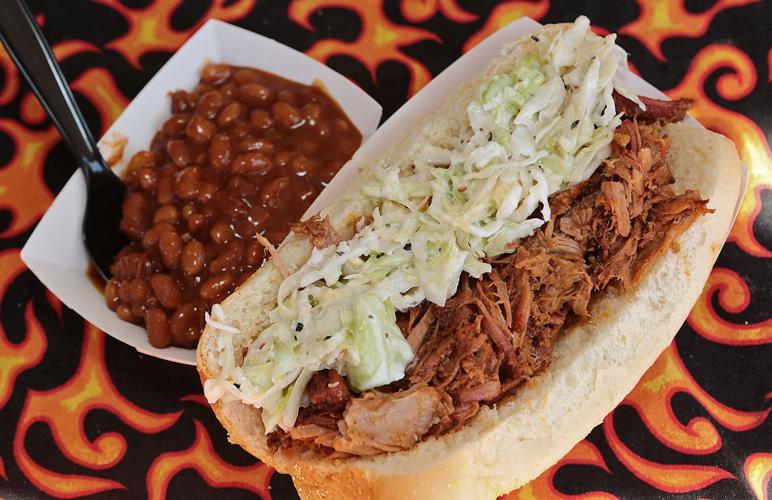Tucson, it’s time to meet yourself. Again.
The annual Tucson Meet Yourself festival, where folks submerge themselves in food, performances and art, is Oct. 13-15. The festival helps tell the stories of over 50 different cultures thriving throughout Tucson.
“Of course it’s entertaining, of course there’s amazing food,” says Maribel Alvarez, director of the Southwest Folklife Alliance, which mounts the event. “But it’s very educational — not in the sense that you have to sit through lectures, but you get to meet so many people.”
Tucson Meet Yourself falls into the folklife festival genre.
“Folklife is more than just folklore,” Alvarez says. “It refers to the life of ordinary, working people. But we just set the platform. We don’t tell the Chinese, the Greek, the Vietnamese, how to represent themselves.”
HISTORY
Started by folklorist Jim Griffith, Tucson Meet Yourself began in 1974. Back then it was called Tucson, Meet Yourself. Comma included. Griffith was the director of the University of Arizona’s Southwest Folklore Center for nearly 20 years.
The festival was inspired by the Smithsonian Folklife Festival, which began in 1967 and welcomes close to a million people to the Washington mall over the course of two weeks, Alvarez says.
“At the time, many people around the country got the idea that we should bring communities together,” Alvarez says. “Communities that were largely invisible to the arts life.”
And just like that, with Griffith and help from his wife Loma, and friends, Tucson Meet Yourself was born.
The first festival welcomed 1,000 people to El Presidio Park. Now more than 120,000 people head downtown for the event.
“We want to celebrate the diversity of cultures — all these people who call this region home,” says Alvarez
This year, the event will feature approximately 58 food vendors, 100 performing groups, 100 folk artists, 80 community exhibitors, 55 car owners for a car show, and hundreds of volunteers.
Altogether, Alvarez says there are close to 5,000 participants volunteering, serving food with their families and friends, showcasing their art, and performing. Let’s meet some of them.
SEMA FOUNDATION
The Sema Foundation, a community service organization bringing different cultures together through various events, will have water marbling, ceramics, and a singer at this year’s fest. But people get most excited for Sema’s food—kabobs, Turkish meatballs, Turkish quesadillas, rice, baklava, gyros, Turkish coffee, and so much more.
The most popular is the Turkish ice cream, which can’t be found anywhere in the United States, says Seljan Saadet, Sema’s outreach coordinator. Not only is the ice cream good, but Sema brings along an ice cream man who puts on a show while making the dessert.
Saadet says the lines for the ice cream get longer each year.
“We just miss our culture and want to share it with other people,” Emine Ulu, volunteer Women’s Coordinator, says. “A lot of friendships start at Tucson Meet Yourself.”
Ultimately, what the annual festival does parallels what Sema does.
“The idea of Tucson Meet Yourself is to bring people together,” says Servet Akguc, Sema’s branch director. “Even if they aren’t born or raised here, the festival brings people together to get to know each other.”
“There are a lot of bridges between people,” Saadet says. “We live in an environment where we don’t even know our neighbors. I believe this is a really important event for people to get to know each other and their cultures, to share ideas, educate, and improve upon ourselves.”
SIVA MAIA
The Siva Maia Polynesian Dancers walk onto the dance floor during a dress rehearsal for their Tucson Meet Yourself performance. They’re barefoot, with lime green skirts hovering above their knees and a tutu-like waistband made from colorful flower petals and leaves. Flowers sit perfectly in their hair.
Cue the music and the dancers, women of various ages, dance in unison. The movements are smooth and gentle. There isn’t a moment when a woman isn’t smiling as she swings her hips and taps her feet on the floor.
“We are a diverse group,” choreographer Marie Lankford says. “We have ladies from different backgrounds and ethnicities, and I want to showcase that we can be a team and share a culture that we love so much.”
Siva Maia, which means “let’s dance” in Samoan, started at the Davis-Monthan Air Force Base when a group of Samoans decided to showcase their culture.
“Siva Maia is a way of perpetuating the Polynesian culture and sharing it with the community,” Lankford says. “I love Tucson Meet Yourself. It’s such a wonderful feeling to have all these people bringing their cultures and sharing them with everybody. They’re all so friendly, so open, and inviting. It’s a wonderful environment.”
Siva Maia performs at 2 p.m. Oct. 15 on the Alameda stage.
CLUB COLOMBIA
Club Colombia will serve up empanadas, arepas, papas chorreadas, cocadas, tropical juices, and Colombian coffee at the festival.
“Making all the food takes a lot of manpower,” Club Colombia President Angela Roll says. “But we do it because we want people to know our culture.”
One year, a fellow Tucsonan arrived at Tucson Meet Yourself at 8 a.m. to buy empanadas. The festival didn’t start until 11 a.m.
“He had a ‘Little Red Riding Hood’ basket,” Roll says. “He said he told his wife he would get them, and that he couldn’t go home without them.”
So he stuck around for the next few hours until the empanadas were ready to be served. Roll says they also have people who come to the event with Ziplock bags asking for their cocadas in bulk. Cocadas are coconut clusters.
In addition to the food, Club Colombia also performs. Roll says the dancers are of different ages and are not professionals. The club also handcrafts each and every one of their outfits. One of the seamstresses is 90 years old.
The skirts are long and “floaty,” Roll says. They’re bright and colored with the same colors of the Colombia flag — yellow, blue, and red. And Colombia is a big exporter of flowers; the costumes will reflect that.
Catch Club Colombia’s dance performance at the City Hall stage at 5 p.m. Oct. 14.
JASMINE SYRIAN FOLK & DABKE BAND
It all started when Rania Kanawati’s daughter got married. They were looking for a traditional Syrian band to perform but couldn’t find one nearby.
“I thought, ‘How about we create one here?’”
Kanawati got six Syrian refugees together — none of whom knew each other until meeting with Kanawati. Many of them have only been in Tucson for about a year.
Kanawati says the drums are most important in the band, but it’s also about the dancing and singing.
“It’s good to keep our tradition around,” member Mohammad Alzarrad says. “It’s good to get people to know us and other traditions.” Each member spoke through Kanawati as their translator.
Mohammad Alkej says the same. “I like to show people what we’re all about — what our culture is,” he says.
So far, the band has done very few performances, but they’re excited for Tucson Meet Yourself.
Kanawati also says that they have a “special way” of dressing up. They initially contacted people from Syria to make their costumes, but they ran out of time and ended up having to create the outfits themselves.
Other band members are Feras Alkej, Abdul Kafi, Hosam Kataf, and Issa Alkurdi.
Look for the Jasmine Syrian Folk & Dabke Band at 1:15 p.m. Oct. 14 at the City Hall stage.
ALOHA ISLANDERS & HULA HALAU ‘O KI’INANI
When “Somewhere Over The Rainbow” by Louis Armstrong comes over the loud speakers during a rehearsal for the festival appearance, the Aloha Islanders & Hula Halau ‘O Ki’inani dance group begin to sway. There are big smiles on everyone — the adult women in the back, and even the little kids in the front. The movements are light and graceful and their colorful skirts and bushy flower crowns float back and forth.
Next up is “How Far I’ll Go” from the Disney movie “Moana,” where the young girls wear long, blue dresses. As the dance ends, a new one begins. One features the smaller children in blue sequined mermaid outfits, with the preteens dressed as sparkly seaweed behind them.
Ki’inani Thelin started the dance group after moving to Tucson from Maui about a dozen years ago. Since she had always been involved in hula dancing, she wanted to stay involved — despite being nearly 3,000 miles and an ocean away.
Thelin first began to teach hula to help with Boy Scout and church fundraisers.
“After several successful fundraisers, I decided that much more could be taught and shared to touch other people’s lives who either had no experience of the culture or had memories that we could bring back to them,” Thelin says in an email. She also says that much of the Aloha Islanders is about teaching kindness.
With the dance steps come lessons on culture.
“We believe that as we celebrate and share our culture, it helps us stay connected to our roots,” she says. “It uplifts us as well as those we share it with. If we share our cultures, we can find commonality and the gaps of diversity begin to close and bring us closer.”
Thelin says that Tucson Meet Yourself gives folks the opportunity to make many cultures “feel like one.”
“What better place to be able to travel and experience the world in a few days than at Tucson Meet Yourself?” she says.
Aloha Islanders & Hula Halau ‘O Ki’inani performs at 4 p.m. Oct. 14 on the Alameda stage.


